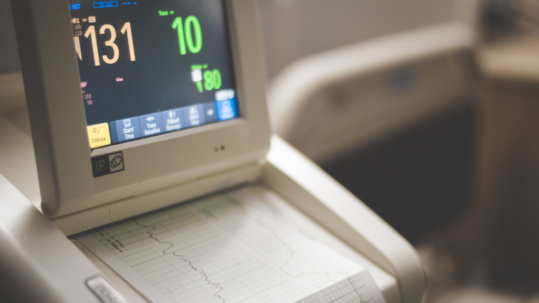
27 Jun Making a Full Physical Recovery – A Day-by-Day Miracle
“You should exercise more.”
A brutal statement. One I had tried to fulfill on my own, and time and time again, had failed.
It was a frustrating piece of advice from my doctor and felt so out of reach as I navigated my bouquet of chronic illnesses. I had been using a cane anytime I left the house because I felt unsteady even just walking a minute or two. I was using a wheelchair at stores, my Dad was carrying me up and down stairs, and I was taking frequent breaks and naps throughout the day. Exercise was the LAST thing I wanted to spend my precious energy on.
But after going through the Mayo Clinic Pain Rehabilitation Program, I am now able to be functional at a normal level. I have enthusiastically embraced everything from ballroom dance lessons, to bowling, to taking hikes with the family. This recovery was (and is) a miracle from God, and I am so grateful for the ways he provided a means to receive this life-changing intervention.
Program Exercise and Movement
The program took a comprehensive approach to recovery, and tackled physical reconditioning, regulating mental/emotional health, rehabilitating the autonomic nervous system, and facilitating positive (and non-illness-based) social interaction, among a million other things.
Each of these components was critical to my recovery, but movement quickly became the scariest (and most rewarding) part of each day.
The program started each day with 15 minutes of gentle stretching. Opening and closing the mouth. Slowly looking right and left. Bending the fingers. Weight-free bicep curls. Leg stretches. To the able-bodied human, it’s no big deal, but for me, it was daunting. I had started Day 1 with a determination to advocate for my needs and to moderate my participation in each activity, but I quickly realized that’s not how this was going to work. I was expected to show up, and I was expected to complete each activity regardless of symptoms. This was a very new concept for me and one that made me supremely uncomfortable. I had a hard time standing for more than 3 minutes or walking more than 5 (literally, as noted by my physical therapist back home), but I was already exceeding these limits by 8:10am each day of the program. I was certain I would “crash” beyond repair, and the first few days, my symptoms DID skyrocket. But I figured I had nothing to lose, and ultimately surrendered to the process. In a weird way, I was comforted by the fact that if I were to have a medical crisis as a result, I was already in one of the best hospitals in the world.
We started slow. In physical therapy, I started with curling 1lb weights, and even though they felt tiny and silly in my hand, they made my arms shake with effort. I started with 2 minutes on a treadmill at a slow walk. The physical therapist asked me to release my hands, and when I looked down, I was white-knuckled, clutching the support brackets as if my life depended on it.
At first, my fears were proven right. I had several episodes that justified the idea that “exercise is dangerous,” and I began to dig in my heels. The emotions were strong, and the symptoms were real. But I quickly found that (with real-time coaching) I actually was capable of moving through my symptoms without having an acute crisis using new skills to mitigate what I was feeling without giving it time, space, or attention. Despite how blatantly counterintuitive it felt, I was learning to ignore the screaming sirens that were safe to ignore. I had spent so much time fine-tuning my ear to even the slightest hint of danger, and now I was learning how to turn the volume down so that I could keep living life.
This was a whole new way of interacting with my body, and it included ME being the decision maker, despite overwhelming amounts of physical and emotional input.
As I began to make progress, I felt kind of hesitant. Was I really the one standing in the way? Was this all just anxiety that locked me into being disabled? Was it my fault for letting my symptoms stop me from living life?
But they would remind me that I am dealing with a disordered nervous system. My symptoms and diagnoses could not be isolated to physical or mental origins, because the nervous system is an integral part of BOTH. Postural tachycardia, panic attacks, and functional neurological episodes are all symptoms of this jacked-up system (ie. central sensitization), and the rehabilitation of that system includes reorienting to safe vs unsafe stimulus. Each day I was practicing new strategies for regulating my nervous system and lowering the constant “fight or flight” reflexes that had been wired into my body for years. Whether it was forcing slow diaphragmatic breaths to control my heart rate as I stood up from the floor, or choosing to rewrite the pessimistic thoughts on loop as I faced hard things, I was starting to change. The classrooms and hallways became a training ground for the new coping strategies, and like a young child learning how to manage their mind, body, and emotions, I surrendered to the process of learning, practicing, and committing to healthy human behaviors.
So exercise.
It was my nemesis…until it wasn’t.
By week 2 of physical therapy, I was beginning to have a less judgmental attitude towards what I was experiencing. As the days ticked by, I realized that I was not only less distracted by my symptoms…but that the frequency and intensity of those symptoms were gradually lessening. We ruthlessly marched forward- six minutes on the treadmill turned into seven, then eight, and then nine. One-pound weights turned into two, then three, then four.
And to my absolute shock, I was doing it. I was getting stronger.
In the mental file cabinet of knowledge, I was well aware that exercise makes muscles stronger, but never in my life had I ever experienced or noticed such a dramatic change. From day to day I was seeing myself do things I could not possibly have done on Day 1, and every single milestone was sacred and treasured.
As I made dramatic improvements through the hard work of the program, I realized just how gracious God is in giving good gifts of healing through a variety of means – hard work included. I started to draw parallels to my spiritual walk too. Making these small (and consistent) changes in my physical habits revolutionized my life…and I began to consider how spiritual habits do the exact same.
That the Christian life is not only one decision that impacts our lives, but also a day-by-day transformation that takes work, guts, and commitment. Just like I have had seasons of physical deconditioning, I’ve experienced spiritual deconditioning too. Whether it’s being distracted by life, having questions that don’t have clear answers, or feeling hurt by people (or even God), there are a multitude of reasons for spiritual apathy. There are times when I become frustrated at how I’ve “dropped the ball” or let my guard down, but those are the very moments when a decision gets to be made. Instead of shame over my apparent failures, I now have a framework that allows for the accepting of my shortcomings while equipping me to make the next right decision. Just like I didn’t start with 5lb weights and 30 minutes on a treadmill, the restoration of strength and health doesn’t always come overnight.
It might not be an hour of prayer, but it could be 1 minute of inviting God into the moment.
It might not be reading full chapters of scripture, but it could be tucking away one verse into my heart as I face the day.
It might not be watching a whole sermon, but maybe it’s playing 1 worship song and meaningfully singing along.
There is no shame in starting somewhere. I look back at those 1lb weights, and I don’t see weakness. Rather, I see strength in the brave choice to seek help, to commit to the process, and to do the hard work. My abilities expanded to doing stairs, dancing, and driving, ALL of which I would have deemed impossible just a few short weeks prior.
Similarly, 1 minute of prayer soon becomes a reflex of gratitude.
1 memorized verse becomes a heart firmly established in truth, not easily swayed by fear.
1 song in the car becomes a heart that defaults to worship when the details of life are overwhelming.
And scripture says THESE are the very habits and heart-change that matter – both now and for eternity.
“for while bodily training is of some value, godliness is of value in every way, as it holds promise for the present life and also for the life to come.” 1 Timothy 4:8
It can feel overwhelming to consider the ways we aren’t “doing enough” to grow in our relationship with God. But this life is FULL of choices, and while it can be (and often is) a burden, it is even moreso a gift. Just like we choose to surrender our lives to God and accept the free gift of salvation, we get to choose to walk in the sanctification process of becoming more like Christ a little bit each and every day.
Summary
Mayo’s program taught me many things: surrendering to the process, making small and consistent changes, persevering on difficult days, and boldly facing fears to name a few. But these concepts aren’t reserved for specific sections of life, and have been a reminder of the gift that I have been given by God – the gift to choose.
So today, I choose to make one more small step towards health – physically, emotionally, and spiritually. And tomorrow, I will do the same. I know we are each at our own starting line, but wherever you are in the journey, I hope you join me in living today with intention. Not with guilt. Not with shame. Not with “shoulds.” But instead, holding acceptance for where you are at in one hand, and determination to make one small change in the other. Whether it’s 3 minutes of stretching, or 3 minutes to read a daily devotional, join me in choosing life.
-
Making a Full Physical Recovery – A Day-by-Day Miracle
“You should exercise more.” A brutal statement. One I had tried to fulfill on my own, and time and time again, had failed. It was a frustrating piece of advice from my doctor, and felt so out of reach as I navigated my bouquet of chronic illnesses....
27 June, 2024 No comment -
Awesome Recovery News!! And Why I No Longer Plan To Write About My Symptoms
I am so excited to report that after graduating from the 3-week Pain/Symptom Rehabilitation Center at Mayo Clinic in Rochester and continuing the program at home, I am nearly 100% recovered!...
05 March, 2024 3 Comments -
What is the Valsalva Maneuver like?
The Valsalva maneuver is EASILY the most fascinating thing I’ve gotten to do in this entire medical adventure. On the surface, it’s a fairly quick and easy part of autonomic testing, but underneath, it’s one of the coolest and most complicated mechanisms of the human body that I’ve encountered. ...
17 January, 2024 3 Comments






No Comments